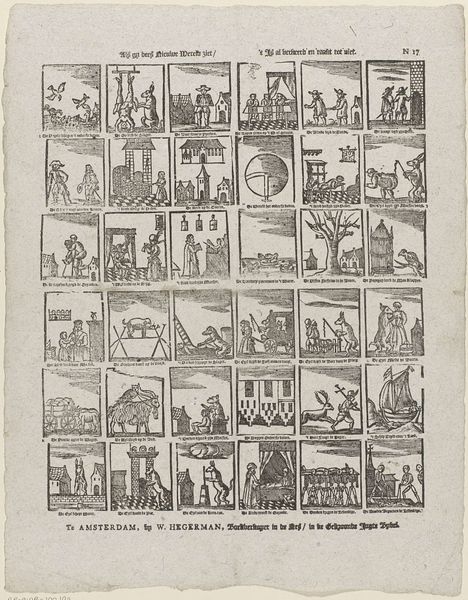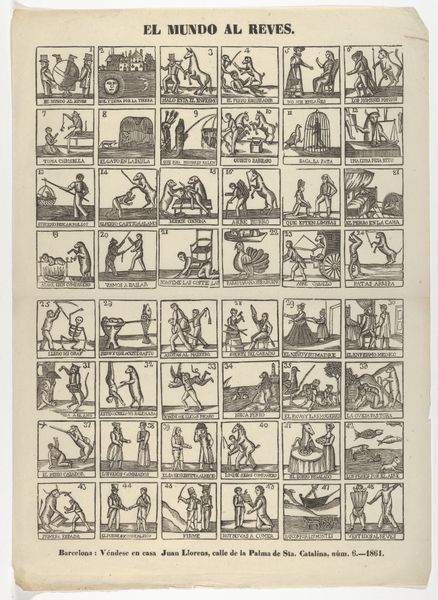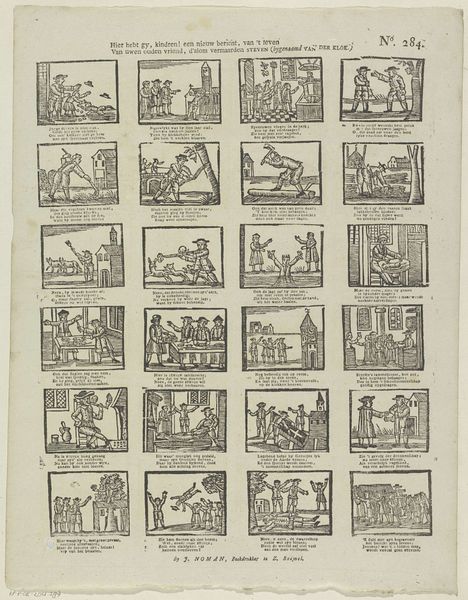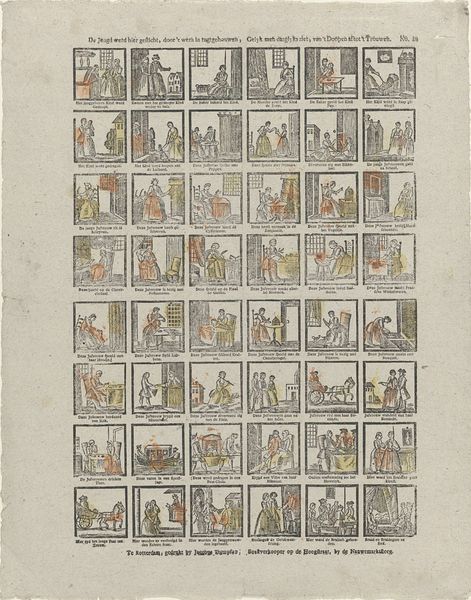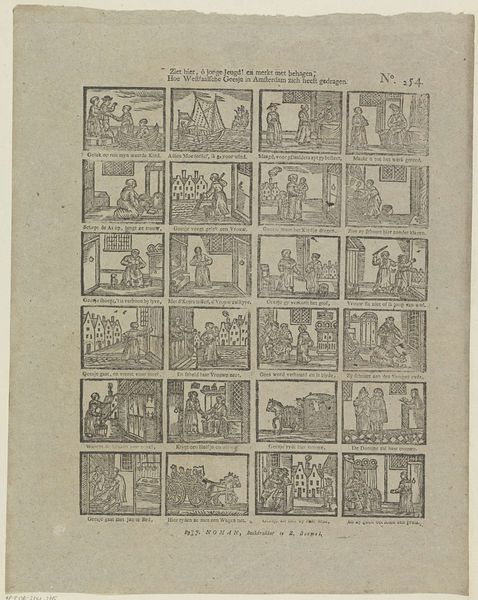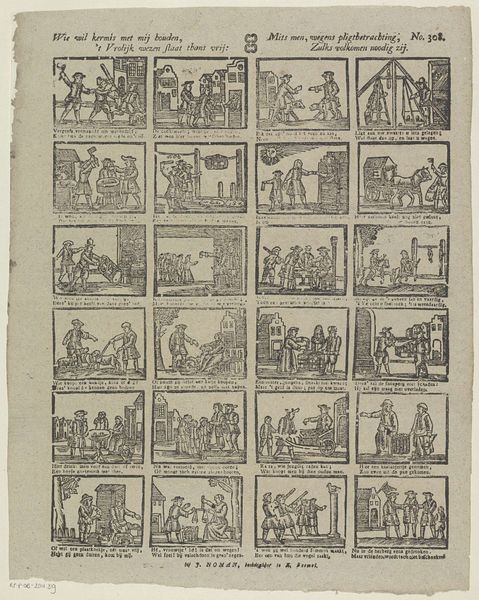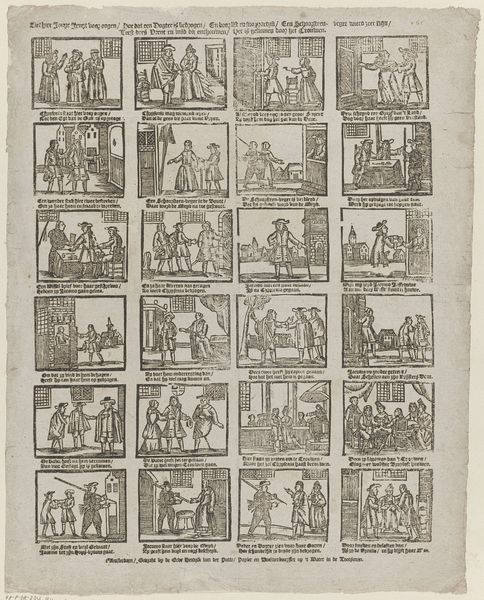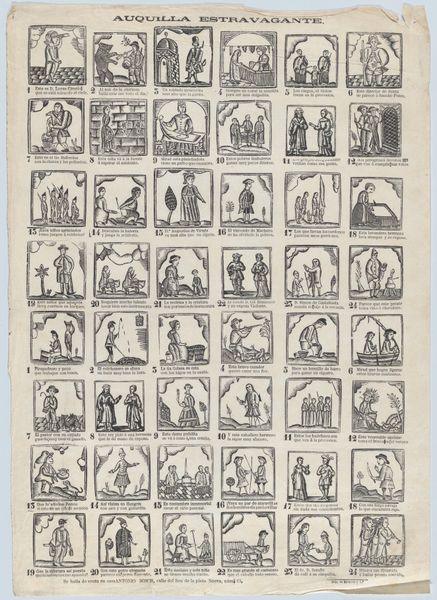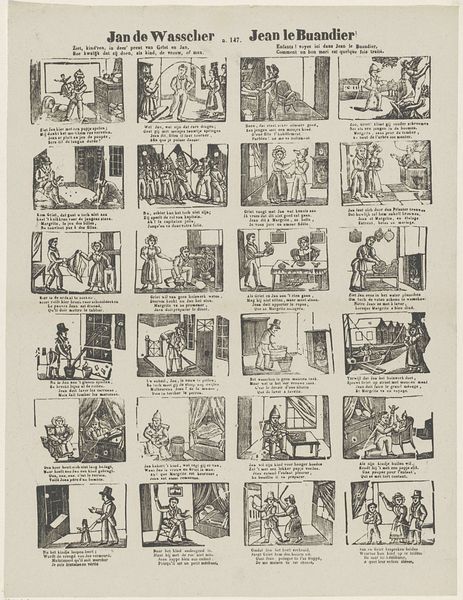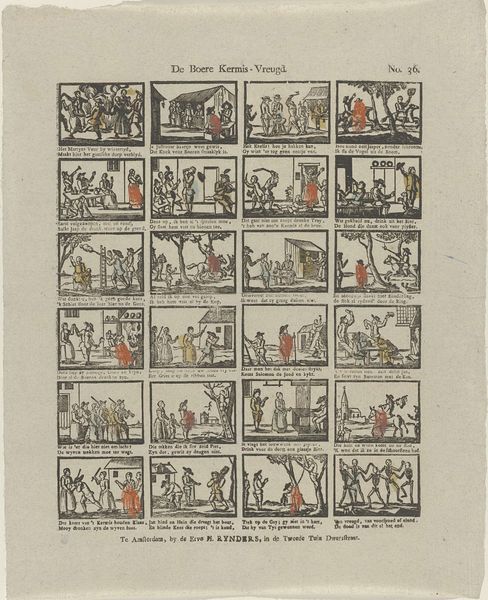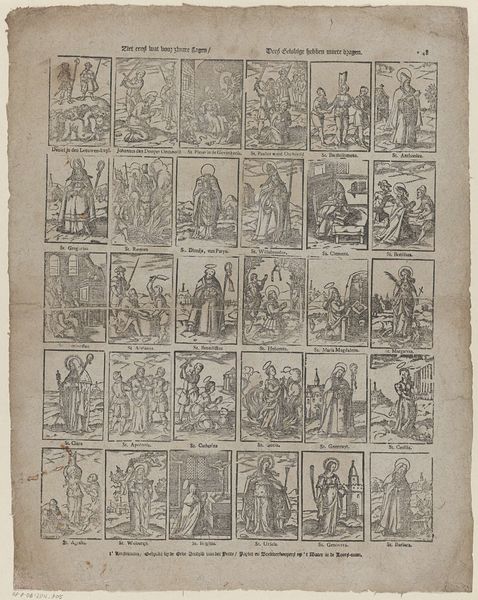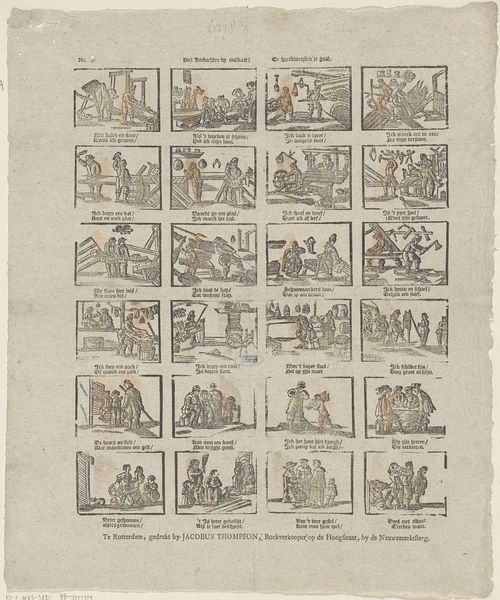
De jeugd werd hier gestigt / door 't werk in tugt gehouwen / Gelijk men daaglijks ziet / van 't doopen af tot 't trouwen c. 1822 - 1849
0:00
0:00
print, etching, engraving
#
narrative-art
#
dutch-golden-age
# print
#
etching
#
old engraving style
#
figuration
#
genre-painting
#
history-painting
#
engraving
#
realism
Dimensions: height 407 mm, width 321 mm
Copyright: Rijks Museum: Open Domain
Curator: This is an engraving by Jan de (II) Lange, dating from around 1822 to 1849. It’s titled, rather lengthily, "De jeugd werd hier gestigt / door 't werk in tugt gehouwen / Gelijk men daaglijks ziet / van 't doopen af tot 't trouwen," which translates roughly to "Youth was established here / by work kept in discipline / as one sees daily / from baptism to marriage." It’s quite the mouthful, isn’t it? Editor: It is, and initially overwhelming! So many tiny scenes! It feels a bit like looking at a sampler or maybe even a flow chart... and there is this feeling of routine embedded within its grid. Curator: That feeling aligns perfectly with its societal function. Prints like this served as moral instruction, mapping out the ideal progression of life stages within a rigid social order. The Rijksmuseum houses this particular print, underscoring its cultural value as a historical artifact. Editor: Look how the artist painstakingly renders daily activities; sewing, reading, perhaps even commerce, and social interactions. One starts to wonder about the kind of labor involved in its own production and distribution… imagine the number of prints pulled from this etching to promote a very particular model for civic life! Curator: Precisely. The material – a print – made it widely accessible, reinforcing norms across social classes. Notice how each small scene functions as a didactic lesson, reinforcing conventional gender roles and the importance of piety and labor within the community. Consider the very act of etching, a repetitive and exacting craft reflecting those societal demands for precision and conformity. Editor: And the text interwoven with imagery isn't just descriptive but prescriptive. The combination of image and word really drills the message home. What kind of choices did Lange grapple with when etching it and by making such art who was he aligned to politically or culturally. Curator: This piece embodies a specific vision promoted and reinforced during the Dutch Golden Age—even if this comes a bit later— one centered on stability and the containment of potentially disruptive forces. Its narrative isn’t just descriptive; it’s a call to adhere to a very specific socio-economic script. The placement within the Museum gives it validity and perhaps unintentionally it helps us deconstruct it to analyze its use for civic instruction in early modern Europe. Editor: Thinking about the labor behind it shifts my perspective, making the rigid structure appear almost... fragile, a manufactured construct requiring constant effort to maintain. Curator: Indeed. Reflecting on the print underscores not just the message, but the medium's capacity to shape and control perceptions and lived realities of ordinary folk. Editor: I agree. I will walk away thinking that looking at labor brings an interesting dynamic into this piece, it almost subverts its message with a sort of irony and a view to challenge it and what it presents us.
Comments
No comments
Be the first to comment and join the conversation on the ultimate creative platform.
